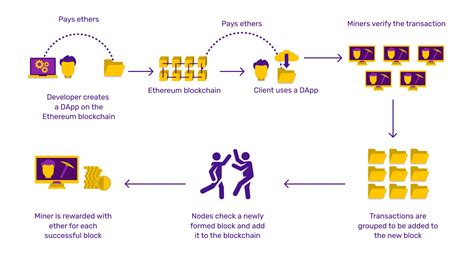Ethereum: How hard is it to alter a block after it was found?
The Complexity of Block Modification on the Ethereum Network
Ethereum, one of the most widely used blockchain platforms, relies heavily on a decentralized mining process. Miners compete to solve complex mathematical puzzles to validate transactions and create new blocks. However, modifying a block after it has been created is not as simple as it may seem.
In this article, we will delve into the complexity of Ethereum’s block modification process and examine whether miners can easily modify a block or if there are any restrictions.
Mining Process
When a miner finds a valid block on the Ethereum network, he or she typically submits it to the blockchain as a proposed change. The proposed change is then reviewed by the Ethereum community using a consensus mechanism called Proof of Work (PoW). Miners who believe their solution is better than the original are incentivized to solve the puzzle and add their solution to the block.
Modified Block
Once a miner has added their solution, they must verify that it is correct. They do this by solving another puzzle known as the “target hash,” which must be less than or equal to 6,000 times the target hash of the previous block. If the solution is valid, the modified block is included in the next block.
Can miners modify a block?
Now, let’s address the question at hand: can miners modify a block after it has been created? The answer is yes, but with certain caveats.
In Ethereum, each block contains multiple transactions that are bundled together and verified through PoW. When a miner finds a valid block, they don’t just add new transactions to an existing block. Instead, they create a new block with the modified transactions added to it.
Modified Block Structure
Miners can modify blocks in several ways:
- Adding new events: Miners can add new events to an existing block by creating a new block and adding the modified event to it.
- Deleting events: Miners can also delete events from an existing block by solving another puzzle that allows them to delete a specific event without affecting the entire block.
How do miners know if they can modify a block?
To determine whether or not a miner can modify a block, they must solve the target hash of the proposed change. However, there are limitations to this process:
- Miner information: A miner must have complete knowledge of the Ethereum network and all previous blocks to ensure that their solution is valid.
- Time Limits

: Miners are only given a limited amount of time (known as the “slush period”) before a block is merged with other blocks on the network.
What happens if a miner can modify a block?
If a miner can successfully modify a block, they are rewarded with a certain amount of Ethereum tokens, known as “gas”. The gas limit is set by the Ethereum Virtual Machine (EVM) and is calculated based on the complexity of the puzzle being solved.
Conclusion
Finally, changing a block after it has been created on Ethereum is not as simple as it may seem. Miners can modify blocks, but they must have complete knowledge of the network and solve the target hash of the proposed change. The process involves creating a new block with the modified transactions added, which requires significant computing power.
While block modification is possible, miners are usually limited by their knowledge and time constraints. It is worth noting that the Ethereum development team has implemented measures to prevent malicious modifications, such as sharding and zero-knowledge proofs.
In summary, the complexity of modifying blocks on the Ethereum network makes it difficult for miners to modify a block after it has been created.

Bir cevap yazın